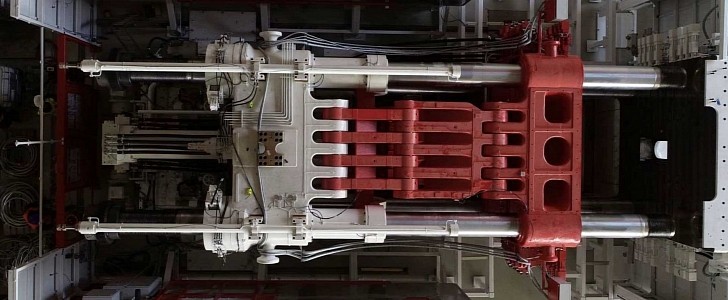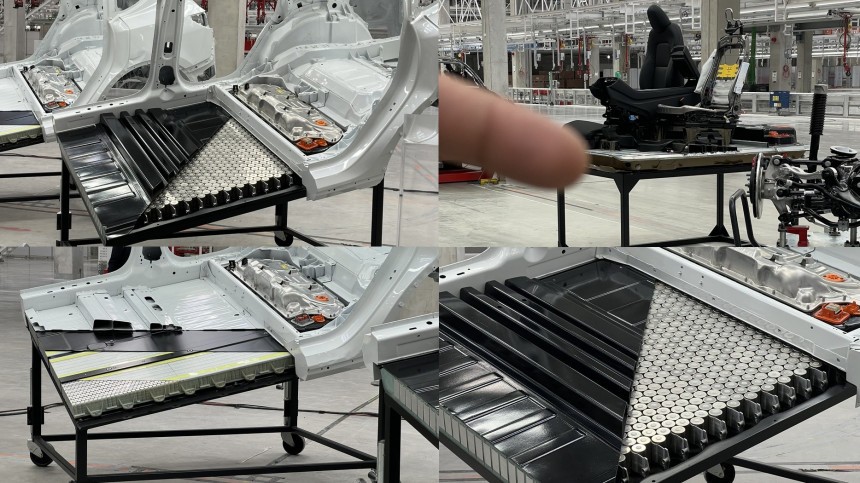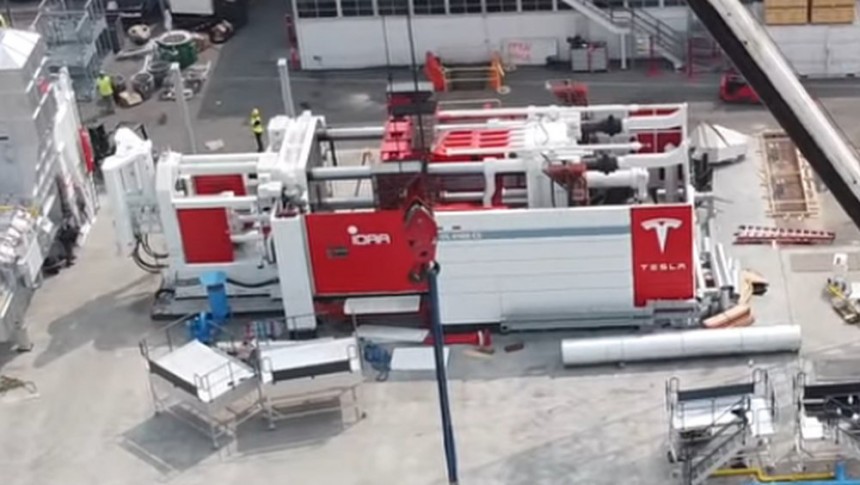Everyone is familiar now with what Tesla called “mega castings” back in 2020, but few are aware that the idea did not originate from Tesla. In fact, it was a small Italian manufacturer that first introduced the concept to the world, only to be ridiculed. Tesla was the first carmaker to implement it, and soon the Italians could not keep up with the orders for their once derided Giga Press.
The idea to build a European gigafactory was so old that, at first Tesla called it the “Gigafactory 2”. It only began officially known as the Gigafactory 4 in November 2019, when Elon Musk announced that Berlin was chosen as the definitive location. The construction began in May 2020, and soon Musk’s tweets revealed details about the marvelous technologies that will be pioneered in Germany.
“Berlin will use 4680 cell with structural battery pack & front & rear single piece castings. Also, a new paint system. Lot of new technology will happen in Berlin, which means significant production risk. Fremont & Shanghai will transition in ~2 years when new tech is proven,” was revealed by Musk in October 2020.
This might have been overlooked, but at the Giga Fest, a year later, Tesla lined up the new technologies on the factory floor, and everybody freaked out. Herbert Diess, Volkswagen’s CEO, took the idea of mega castings very personally. Mega castings would have allowed Tesla to build the Model Y in 10 hours compared to the 30 hours it takes Volkswagen to build ID.3.
From then on, the mega castings were a fait accompli and started a revolution among other carmakers. Many likened it to Henry Ford’s first production line in terms of the influence it would have on the automotive industry. Volvo announced, recently, a similar technology, while the Chinese companies like NIO and Xpeng are also interested. But few know that the idea of mega castings started from the Italian company Idra.
The term was coined by Idra’s CEO Riccardo Ferrario in May 2019 when the Italian supplier produced their first OL 5500 CS HPDC machine. One year later, it entered the public domain thanks to Wikipedia. The Idra machines were (and still are) the largest high-pressure die casting machines in the world, with a clamping force of 55,000 to 61,000 kilonewtons (5,600 to 6,200 tf). It is true the first customer was Tesla, but, interestingly, the first Giga Press machine was installed not in Berlin, but in Fremont.
According to media reports, Tesla started to use Idra’s Giga Press at Gigafactory Fremont in August 2020 to create Model Y’s rear underbody. At Giga Berlin, there will be eight 6,100-tonne-force (60,000 kN) Giga Presses, with two reportedly already in operation. Tesla will soon have Giga Presses at all its gigafactories around the world.
But the success did not come easily. When Idra presented the idea in 2019 at GIFA Berlin, everybody ridiculed it. “All potential customers laughed at the idea, saying we could never make it work,” Ferrario said in a video chat with Automotive News in February. A year later, Idra started production of the first Giga Press. Nobody laughed anymore, especially as they saw the first mega casting samples at Giga Berlin.
Fast forward to now, Idra has already sold 22 Giga Presses. Seven of them are in operation, five are being installed, while 10 are still to be delivered. The advantages that the Giga Presses bring to the table are undisputable. Theoretically, a Giga Press can produce a rear underbody frame in a single piece.
A one-shot casting of a front or rear platform from a Giga Press replaces up to 250 pieces and reduces weight by 10 to 30 percent, depending on the mix of steel and alloy used. It is also very efficient, replacing a series of tools and up to 200 meters of robotized welding lines that would have been needed to create a complete front or rear platform.
“Berlin will use 4680 cell with structural battery pack & front & rear single piece castings. Also, a new paint system. Lot of new technology will happen in Berlin, which means significant production risk. Fremont & Shanghai will transition in ~2 years when new tech is proven,” was revealed by Musk in October 2020.
This might have been overlooked, but at the Giga Fest, a year later, Tesla lined up the new technologies on the factory floor, and everybody freaked out. Herbert Diess, Volkswagen’s CEO, took the idea of mega castings very personally. Mega castings would have allowed Tesla to build the Model Y in 10 hours compared to the 30 hours it takes Volkswagen to build ID.3.
The term was coined by Idra’s CEO Riccardo Ferrario in May 2019 when the Italian supplier produced their first OL 5500 CS HPDC machine. One year later, it entered the public domain thanks to Wikipedia. The Idra machines were (and still are) the largest high-pressure die casting machines in the world, with a clamping force of 55,000 to 61,000 kilonewtons (5,600 to 6,200 tf). It is true the first customer was Tesla, but, interestingly, the first Giga Press machine was installed not in Berlin, but in Fremont.
According to media reports, Tesla started to use Idra’s Giga Press at Gigafactory Fremont in August 2020 to create Model Y’s rear underbody. At Giga Berlin, there will be eight 6,100-tonne-force (60,000 kN) Giga Presses, with two reportedly already in operation. Tesla will soon have Giga Presses at all its gigafactories around the world.
Fast forward to now, Idra has already sold 22 Giga Presses. Seven of them are in operation, five are being installed, while 10 are still to be delivered. The advantages that the Giga Presses bring to the table are undisputable. Theoretically, a Giga Press can produce a rear underbody frame in a single piece.
A one-shot casting of a front or rear platform from a Giga Press replaces up to 250 pieces and reduces weight by 10 to 30 percent, depending on the mix of steel and alloy used. It is also very efficient, replacing a series of tools and up to 200 meters of robotized welding lines that would have been needed to create a complete front or rear platform.














